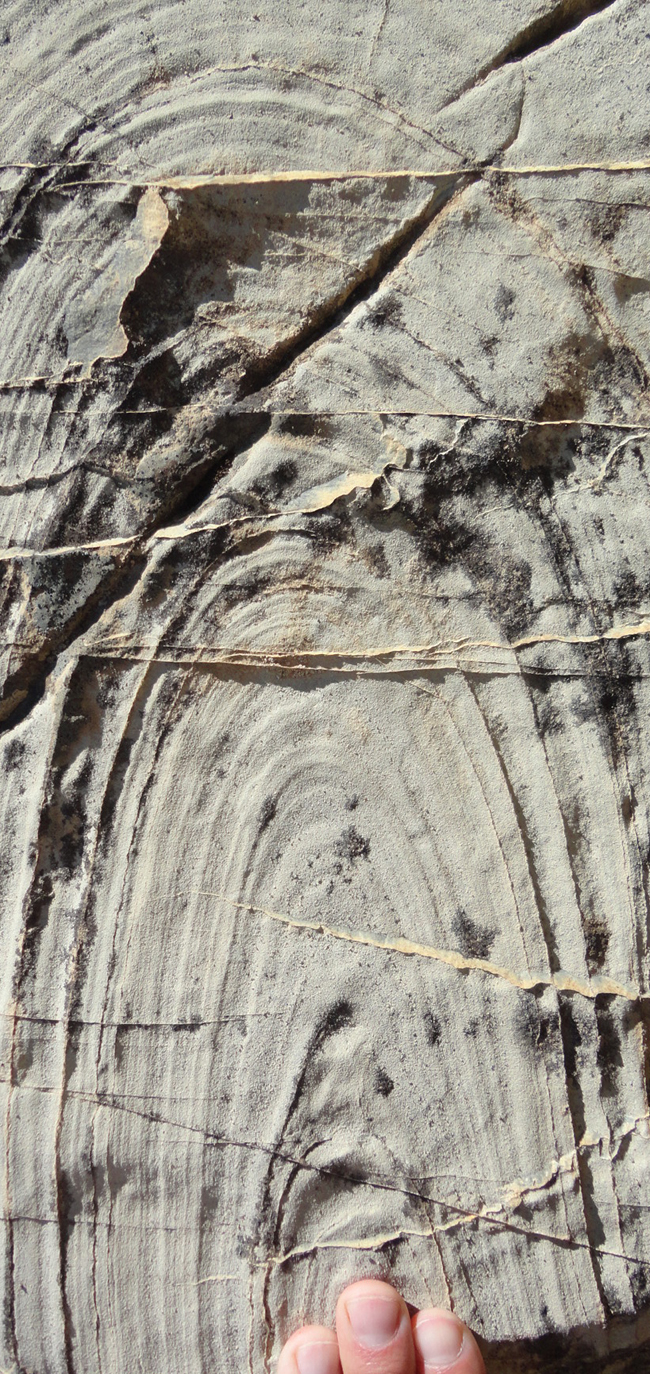Yesterday’s post showcasing my conversational critique of Intelligent Design got a lot of attention, including tweet love from @NCSE and @BadAstronomer, and a blog post at Pharyngula. So, at the risk of overkill, I decided to have a little fun with the Friday fold…
Check out this fold that I found in float of Purcell (Belt) Supergroup limestone last summer, in Waterton Lakes National Park, Alberta:

Such beautiful symmetry! This is clearly the work of an Intelligent Folder. You cannot examine a fold like this without wondering at the way it was put together. Clearly a supernatural agent of uncommon intelligence was responsible. Note the clean lines and “similar” form (meaning thicker at the hinge and thinner on the limbs: evidence of solid state flow). Let’s zoom in:
Note how the Intelligent Folder didn’t put any nasty looking parasitic folds on this masterpiece. He simply (but complexly) applied a little intelligent σ1 (as shown by the red arrows) and then commanded pressure solution to take place, shortening the strata in that direction. And note how He accommodated a modicum of the strain with extensional fractures in the σ3 direction (yellow):

Truly brilliant work! I’m sure some “scientists” would try to pass this off with their reductionist materialist explanations of rheology, stress, and strain, but you and I know better: this exposure is unambiguous evidence of Intelligent Folding.


Watch out! You might get quoted in the next ID textbook.
It must have taken 6000 years to accomplish such a masterful feat …
Oh no! This was accomplished in the 3rd day of Creation!
I may be able to claim a bit of the cause for the hype you got. I sent the link to your post about the DI to three people, immediately after you posted it. Two of which did post about it.
Well, thanks! When things go viral, there has be be a Patient Zero, right? I appreciate you passing it on.
I can only say “Thanks”!
In the all but infinite blogosphere, drawing attention to blogs like Callan’s is a … um … ‘blessing’. I now have another smart, informative and scientifically worthwhile blog to follow.
Knock the end bit off in just the right place and *BINGO* … intelligent isoclinal!
At least we have an indication of how big the designer is because that sure looks like a fingerprint to me.